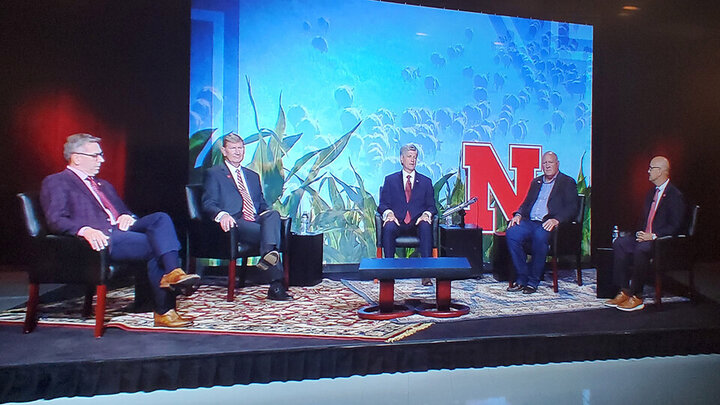Fortenberry, Thompson discuss future of ag with university leaders

Rep. Jeff Fortenberry, along with Rep. Glenn “GT” Thompson of Pennsylvania, the ranking member of the house ag committee, joined university leaders on the University of Nebraska–Lincoln campus Friday for a town hall about the present and future of agriculture — and Nebraska’s important role in both.
NU President Ted Carter, UNL Chancellor Ronnie Green and NU Vice President and Harlan Vice Chancellor for UNL’s Institute of Agriculture and Natural Resources Mike Boehm joined Fortenberry and Thompson for a tele-town hall about the importance of U.S. agriculture to the state, country and world, as well as about the new technologies shaping agriculture.
“American agriculture is defined, and always has been, by science, technology and innovation,” Thompson said during the tele-town hall.
A new facility to be co-located on Nebraska Innovation Campus could push all three forward.
Through his work on the House Agriculture Appropriations Subcommittee, Fortenberry has identified funding for a USDA Agricultural Research Service facility, co-located with the university on Nebraska Innovation Campus and geared toward developing resilient and regenerative precision agricultural practices.
Panelists agreed that Nebraska is a natural fit for such a facility.
Nebraska is unique in that it is home to seven climate zones, has various soil types and is suited to producing a wide range of crops and livestock, Carter said.
“It’s almost like a full cross-section of the United States in one state,” he said.
Nebraska’s land-grant university has had strong ag research, extension and workforce development programs since the beginning, Carter said. That remains true today.
“[Agriculture] is the centerpiece of everything we do,” Carter said. “I’m proud of that and proud of where we are going.”
The United States greatly increased its agricultural production following World War II, Green said, but about 15 years ago, as other countries began to increase investments in their own agricultural research programs, U.S. progress slowed. New investments, such as the potential ARS facility, are needed to ensure a bright future for U.S. agriculture.
Data and technology will drive that future, Boehm said. Nebraska researchers are already working to advance precision crop and livestock management, smart use of limited water resources and use of regenerative agricultural practices, such as cover crops and low- or no-till management, but even more investments in those areas are needed.
During the call-in portion of the tele-town hall, callers asked questions on wide-ranging issues including agricultural economics, domestic ag programs, national security and agricultural technology.
The variety of topics the panelists discussed illustrated the breadth and complexity of the U.S. agricultural industry. For example, the past year underscored the importance of closing the gap in broadband access between urban and rural areas, Fortenberry said. Broadband, he said, contributes to an “ecosystem of livability” that ensures agricultural producers have a high quality of life and that rural communities are able to attract and support the workforce necessary to drive agriculture forward.
It’s important, Thompson said, that Americans who aren’t engaged in agriculture are aware of these complexities, too. Increased science and agricultural literacy, he said, will be critical in helping city-dwelling Americans understand the challenges farmers and ranchers face, the contributions they make and the science behind food production in America.
“All of us need to tell the story of American agriculture,” Thompson said.
